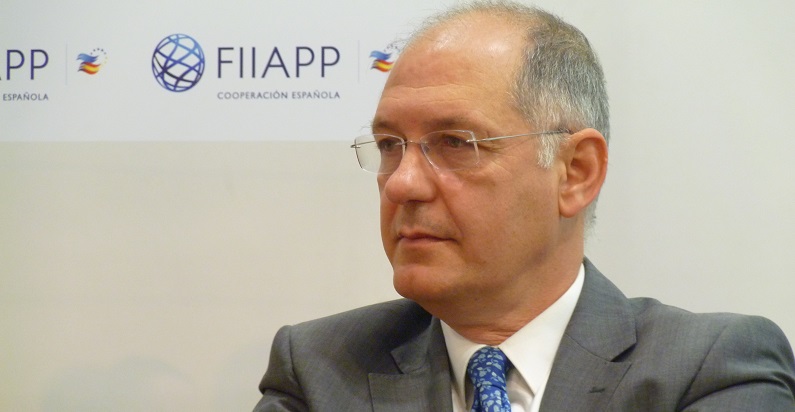-
04 July 2014
Category : Interview
“When it comes to CRBN risks, the first word is prevention”
Interview with Joaquín Baumela, Director of the IBATECH engineering firm and expert in three cooperation projects in the area of CBRN that the FIIAPP is implementing at the international level.

Joaquín Baumela reviews the main chemical, biological, radiological and nuclear (CBRN) threats, the formulas for addressing them and the collaboration Spain offers to other countries to prepare for an event of this type.
You are working with the FIIAPP on three international cooperation projects involving CBRN. How would you characterize this experience?
It’s a novel experience. CBRN was not the subject of international cooperation until the initiative of the European Union’s excellence centres. There was something happening at the NATO level, involving armies, but never on the plane of collaboration. For the FIIAPP, it’s an excellence and market niche in the sense that, leaving aside the more developed countries, the rest are going to ask for some type of cooperation in this area.
Of the countries the FIIAPP collaborates with, which are the best prepared?
The range of countries is so broad that you find everything: countries that have a certain level of industrial development and need improvement, and others that don’t even know the meaning of the acronym, where you have to start to work from absolute zero. In this sense, the EU is committed in a positive way. It is not focusing on it solely as a security issue but also from the point of view of wastes, hospitals, the legal framework. The approach being used is versatile within the characteristics of each country.
And Ibero-America?
Theoretically it’s a more similar market. There is awareness there. Brazil, for example, has developed a protection plan in response to the soccer championship and the Olympics, in which CBRN risks have been included. There are also people who are asking for training. The thing is that there are small countries with very limited resources.
How does a country respond to a CBRN threat?
When it comes to CBRN risks, the first word is prevention and the second is equipment. But the greatest effort and investment have to be focused on prevention.
How does a country accomplish this prevention?
For example, with export controls, not only in terms of chemical, nuclear and other agents but also in terms of any elements that could serve as an indication that someone could be using them. What reason does such a person or such a country have for acquiring protection filters for example? We don’t know. So you can’t export a chemical or nuclear filter without first knowing the recipient, what it’s going to be used for, and having some control over the entire process. We have theoretical knowledge and prior experience. There have been controls of exports of machinery necessary for the manufacture of missiles, controls in the matter of centrifuges in Iraq, and there have been a series of historical events that have demonstrated that these are effective.
After an incident, what are the main steps to take to palliate its effects?
Action protocols exist for minimizing the effects and consequences, but not for eliminating the consequences. For example, in the attack in Tokyo, there could have been 30 people contaminated in the train car, but in the entire transportation system and in hospitals up to 5,000. And so, when something happens, the important thing is to contain it as much as possible to keep it from spreading.
In any scenario like this, research supports efforts to prevent and detect these events.
And that’s why technological research is the target of such heavy investment. The European Union, through R&D programmes, is paying attention and spending hundreds of millions of euros on research in this field as a whole, from detection to crisis management. The total amount for CBRN excellence centres is 46 million euros per year over the next seven years. But that’s the least of it. We could be talking about 300 or 400 million euros in projects.
The views and opinions expressed in this blog are the sole responsibility of the person who write them.




